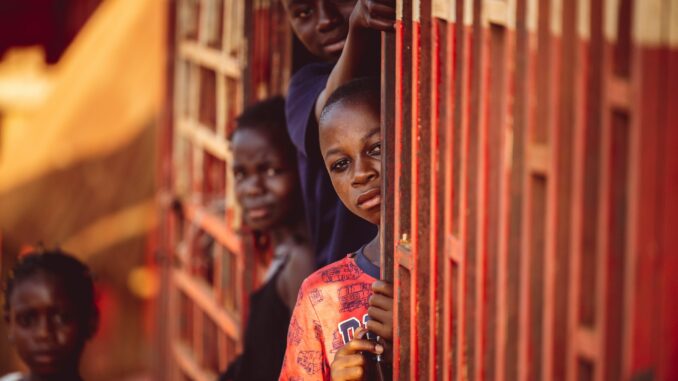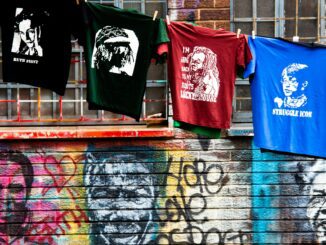
Many people wonderwhy does South Africa have one of the highest rates of inequality in the world? According to reports of the World Bank, it is one of the most economically unequal countries in the world.
Since the apartheid in 1994, the gap between the rich and the poor has been increasing drastically. This is not the only reason. The inequality the country is experiencing is also liked to the racial divisions in South African society. This is because race plays a fundamental role in education and the labour market.
The World Bank report states that ethnicity has been the contributing factor 41% when it comes to income inequality. And 30% amounts to education inequality in South Africa.
The Root Cause of South Africa’s Inequality
Among the many, being the country with highest inequality it is easy to point out to the legacy of apartheid where racial oppression and discrimination was at its highest. Opportunities for a large majority of South Africans under colonial rule were limited. The reason for this is:
- Land was seized
- Peasantry was destroyed
- Poor education quality
- The livelihoods of entrepreneurs were regulated
- Access to high paying jobs were limited
- Restrictions on skilled employment
Moreover, answering why does South Africa have one of the highest rates of inequality in the world? the income and wealth of the country was largely and disproportionately accounted by the white South Africans. This was taking place even long after slavery was abolished along with statutory racial discrimination.
Regardless of the increasing interventionist affirmative action policies were implemented this continued. Some of the key factors that contributed and to the present day continuing to take place that results in South Africa’s inequality consist of:
The Division of Race
Laws of inequality, land ownership, education, income and occupation were written into law prior to 1994. However even after these laws were repealed, the social and economic structures that were put into place continued to exist.
Spatial segregation
The physical geography of South Africa also is a contributing factor to being one of the countries with the highest inequality rates in the world. For example, some towns in South Africa suffer from extreme conditions of poverty, although the economy in the centre of Cape Town continues to grow.
The Uneven distribution of land
Thee unequal distribution of agricultural land in rural areas is a primary factor contributing to high rates of inequality in South Africa. According to a 2014 Land Audit, 72% of the farms in the country is owned by white people which also include agricultural holdings. Africans only own 4% of the farms and agriculture.
Ineffective and Unequal Government strategies
Some reports are of the view that the government of South Africa in the context of economic development also contributes to inequality.
The government policies should also be crafted in such way it benefits low income households, fostering new opportunities, raising incomes, and ensuring that benefits of growth are not unequally distributed.
The Impacts of Inequality in South Africa
According to the International Labour Organisation there are many consequences stemming from the inequalities in South Africa. Some of these consequences include:
Unemployment
Among Black people in particular, there are high levels of unemployment due to a lack of education and skill. In 2014 47.3% of full time workers earned less than R3, 500 per month. Among this were 91% of domestic workers and 85% of agricultural workers that was earning less than that.
Poverty
In households that are headed by females, poverty is a common issue, as household members are not able to work due to disability in rural areas. Poverty is known to be a chronic condition for many South Africans.
Extractive industries
In the South Africa, the extractive industries are also contributing to both inequality and poverty. This is taking place due to the deepening of enclave developments where government and private sector attention is focused on these zones instead of diversification.
Solutions for Inequality in South Africa
According to the International Monetary Fund there are on-going effort such as targeted government transfers, diversification of wealth ownership, and fostering entrepreneurship among marginalised group to reduce poverty.
Despite these efforts inequality remains high and many claim that more needs to be done. Here are some potential solutions:
- Creating more jobs
- Supplying of low-skilled workers
- Improving Education and spatial integration
- Early childhood education for women to enter the workforce
- Increasing or adding new taxes and making taxation progressive
- Higher social spending
- Promoting entrepreneurship among marginalized groups
- Initiating reforms to promote private investments
- Providing affordable healthcare
- Creating strong cooperation between the public and private sectors
- Increasing debt limits
- Expanding cash transfers to a third of the population
- Leveraging successes in plastics and industrial machinery
- Taking advantage of diversification opportunities
Conclusion
Among the countries with the highest inequality, South Africa tops the list. This is due to multiple historic factors that continue to take a hold in the present society worsening inequality. Other factors that contribute to inequality have been lack of education, effective government strategies, racial divides and unemployment.
These issues can be combatted by initiating favourable government policies and strategies such as increasing debt limits, ensuring everyone has free and equal access to healthcare, and promoting entrepreneurship among marginalized groups.
Key Points
- Racial divisions rooted in apartheid significantly contribute to South Africa’s high inequality, with race influencing access to education and the labor market.
- White South Africans disproportionately hold income and wealth, perpetuating inequality long after the end of statutory racial discrimination.
- Spatial segregation and uneven land distribution worsen inequality, with rural areas experiencing extreme poverty while urban centers like Cape Town thrive.
- Ineffective government strategies and policies have failed to address inequality effectively, often leaving low-income households without adequate support.
- High unemployment rates among Black South Africans result from poor education and limited access to skilled jobs, deepening the income gap.
- Targeted government initiatives and reforms are necessary to combat inequality, including improving education, creating jobs, and fostering entrepreneurship among marginalized groups.
FAQs
What are the five types of inequality in South Africa?
There are five types of inequalities in South Africa distribution of income between households; corporate and household assets; education; household infrastructure; and the position of the historic labour-sending regions.
What is the cause of poverty and inequality in South Africa?
One of the reasons poverty and inequality is so prevalent in South Africa is due to its lack of jobs. Households that are in destitute conditions rely on social grants as they are not able to earn an income. And households that does not qualify for social grants are among the most poorest.
Is South Africa rich or poor?
The South African economy is a mixed economy. This is due to rising markets, upper middle income economy, and the economy is the most industrialised, technologically advanced, and diversified in Africa.
What is the inequality in South Africa in 2024?
Among the population in South Africa, some only earn less than $3.65 per day which is forecast to amount to 39.92% as per 2024. The population in South Africa earning less than $6.85 per day is forecast to amount to 60.07% as per 2024.

